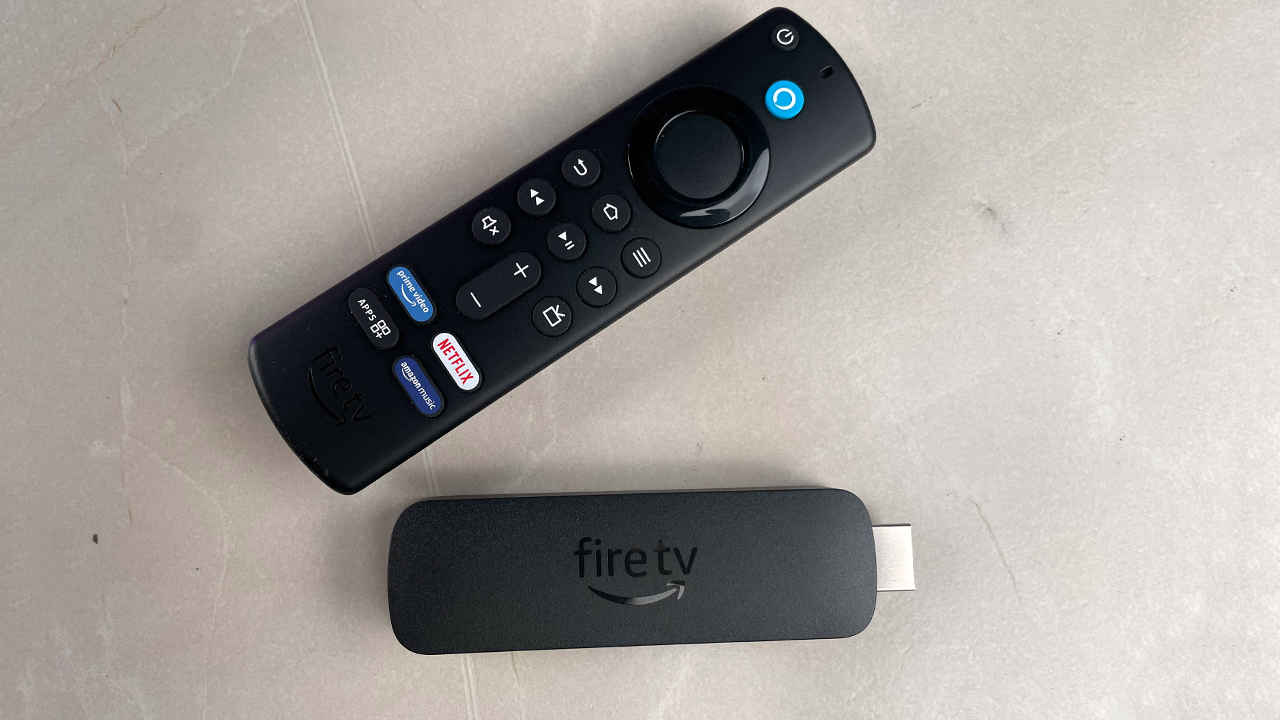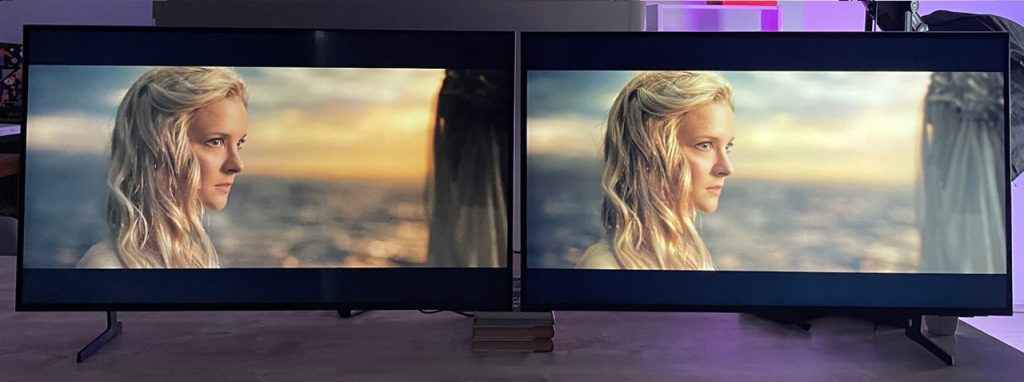Fire TV Stick 4K (2nd Gen) Review – Streamlined and Powerful

Even in an era dominated by smart TVs, streaming dongles and sticks continue to be relevant. Amazon recently introduced its new Fire TV Stick 4K (2nd Gen) in India, which is an upgrade to the first-generation streaming stick launched in 2018. This 4K streaming stick offers support for fast connectivity options like Wi-Fi 6 and HDMI 2.1, as well as the latest audio and video formats like Dolby Vision and Dolby Atmos. It will replace the Fire TV Stick 4K Max in India. If your smart TV has an inconvenient OS, painfully slow performance, or lacks proper app support—or if you want to convert your monitor into a smart monitor—you can consider buying this 4K streaming stick to upgrade your TV viewing experience.
In our Fire TV Stick 4K (2nd Gen) review that follows, we will discuss what has changed this generation, what we liked, and what we didn’t.
Pros
- Fast performance and connectivity
- Ergonomic Remote
- Support for the latest audio and video formats
- Excellent app support
- Ability to disable HDR
Cons
- No Apple Airplay or Google Cast support
- Ads in the interface
Fire TV Stick 4K (2nd Gen) Specifications
- Processor – Mediatek MT8696D (4x ARM Cortex – A55 up to 1.7 GHz, GE9215 GPU @650 MHz)
- RAM – 2GB LPDDR4
- Storage – 8GB ( 5.29GB free at user end)
- HDR – HDR10, HDR10+, HLG, Dolby Vision
- Audio – Dolby Atmos
- Connectivity – HDMI 2.1, Wi-Fi 6, Bluetooth 5.2
- Software – Fire OS 8 based on Android 11
- Box content: Fire TV Stick 4K, HDMI extension cable, Charging adapter, Charging cable, Alexa Remote, 2x AAA batteries, documentation
- Price: ₹5,999
What has changed?
| Generation | 1st Gen (India launch) | 2nd Gen (India launch) |
| Fire TV Stick 4K Max | 2021 | NA |
| Fire TV Stick 4K | 2018 | 2024 |
Before we get to what is new and improved in the Fire TV Stick 4K, let’s first clear some confusion regarding different Fire TV Stick models. The range includes the Amazon Fire TV Stick 4K Max, Fire TV Stick 4K, Fire TV Stick, and Fire TV Stick Lite. Moreover, each of these models has undergone multiple generational upgrades.
The model we will talk about in this review is Fire TV Stick 4K (2nd Gen) which was first introduced globally in late 2023 and then launched in India in May 2024. In India Fire TV Stick 4K will currently replace the Fire TV Stick 4K Max launched in 2021. There is also the 2nd Gen Fire TV 4K Max with 16GB native storage but that’s not yet available in India.
Fire TV Stick 4K 2nd Gen vs Fire TV Stick 4K 1st Gen
The Fire TV Stick 4K 2nd Gen is way ahead of the 1st Gen model that launched 6 years ago. Apart from support for the latest codecs, profiles and connectivity options, Amazon also promises a significant 30% boost in performance which was noticeable since I still have the original Fire TV Stick 4K plugged into my living room TV.
Fire TV Stick 4K (2nd Gen) vs Fire TV Stick 4K Max (1st Gen)
It also makes sense to compare it against the Fire TV Stick 4K Max (1st Gen) that the Fire TV Stick 4K (2nd Gen) is currently replacing in India.
The new Fire TV Stick 4K has almost similar performance hardware as compared to the Fire TV 4K Max (1st Gen), though both its quad-core processor and GPU are slightly underpowered.
There are generational changes like support for more Dolby Vision Profiles, better compatibility with the latest digital rights management updates, and support for the latest connectivity options like HDMI 2.1 and Bluetooth 5.3 which might not make a noticeable difference to consumers.
| Fire TV Stick | Fire TV Stick 4K (2nd Gen) | Fire TV Stick 4K Max (1st Gen) |
| Processor | Mediatek MT8696D (1.7 GHz) | Mediatek MT8696 + MT7921LS (1.8GHz) |
| GPU | GE9215 GPU up to 650 MHz | IMG GE9215 GPU up to 750 MHz |
| RAM and Storage | 2GB | 2GB |
| Storage | 8GB | 8GB |
| Bluetooth | Bluetooth 5.2 + BLE. | Bluetooth 5.0 |
| HDMI | HDMI 2.1 | HDMI 2.0 |
| Wi-Fi | Wi-Fi 6 | Wi-Fi 6 |
| HDR | Dolby Vision, HDR10, HD10+, HLG | Dolby Vision, HDR10, HD10+, HLG |
| Dolby Atmos | Yes | Yes |
Also Read: LG QNED 83 Review
Design and Remote
The new Fire TV Stick 4K has slightly rounder corners and surfaces, but its overall design remains largely unchanged, which is fine since these streaming sticks are meant to be plugged in and forgotten about.
Amazon still uses a micro USB port to power the stick instead of a Type-C port. While this doesn’t have a significant practical impact since you can plug it in once and forget about it, charging cables do occasionally need replacements. In a few years, it might be easier to find USB Type-C replacements around your home when needed.
The Alexa Remote is one of the most convenient TV remotes in my experience. The volume button is positioned just right and so is the D-pad. A dedicated mute button and playback controls are also handy additions. The remote has hotkeys for Netflix, Prime Video, Amazon Music and All Apps.
Fire OS: Setup and Interface
Setting up the Fire TV Stick 4K is a seamless process. The good thing is that HDMI CEC is enabled during the setup, allowing users to use their Fire TV remote to operate basic TV functions.
The Fire OS experience on all Fire TV devices has stayed pretty consistent. It’s a well-designed, intuitive interface that leans towards Amazon apps and services, which makes sense. The good news is that it supports all the popular streaming apps. You can also install apps like Plex Media Server and DS Videostation for local streaming from Amazon’s App Store.
Choosing an interface comes down to personal preference. Personally, I like Fire OS better than the Android TV interface, even though it’s not perfect.
Fire OS uses Miracast for screen mirroring which isn’t as seamless as Google Cast or Apple Airplay. You can cast directly from YouTube on your phone once you have the app set up on the FireTV stick. You can also long-press the home button to start screen mirroring on your Fire TV Stick via Miracast. For screen mirroring via iPhones, you will need to use third-party apps. Another annoyance is the presence of ads on the home screen, which can be off-putting.
Also Check: Best Mini LED TVs to buy in India
Performance and picture quality
The performance felt reasonably snappy on the new Fire TV Stick 4K. Most streaming apps could swiftly transition to UHD HDR streaming and we didn’t notice any lag while fast-forwarding on rewinding content. Even Alexa works significantly faster than on the last generation model.
You will need features like Dolby Vision and 4K natively supported on your TV to be able to access them on the Fire TV Stick. The picture quality you get via Fire TV won’t be the same as you get from native apps on your smart TV. Of course, the TV’s display quality and the picture mode you have selected will have a significant impact, but Fire TV has its own algorithms for picture processing and tone mapping.
To test the Fire TV performance, we used two similar affordable Samsung TVs in our test centre: the 43-inch Samsung Crystal DUE77 and the 43-inch Samsung Crystal DUE70 Smart TV. Both TVs have the same display technology, image processing software, and processor, making them ideal for comparing the Fire TV Stick 4K’s performance. All testing was done in the Filmmaker Mode which has minimal colour boosting and a white point close to industry standard D65.
Naturally, the performance will be better on mid-range and higher-end TVs that offer better display quality.
SDR: FireTV Stick 4K (2nd Gen) vs Fire TV Stick 4K (1st Gen)
To start with, the Fire TV Stick 4K (2nd Gen) outperformed the first-generation model, delivering richer colours and deeper blacks that appeared closer to the creator’s intent.
SDR: Fire TV Stick 4K (2nd Gen) vs TV’s native app
Compared to Samsung’s native Prime Video app, the difference in SDR content was less pronounced, though the Fire TV Stick 4K (2nd Gen) still provided a slightly better picture.
As for HDR, Fire TV Stick 4K seems to follow the standard EOTF curve to stay close to the creator’s intent. This can however be a problem for affordable HDR TVs that have limited dynamic range. The images below appeared darker in person as compared to what our camera captured.

HDR: Fire TV Stick 4K (2nd Gen) vs TV’s native app
In bright HDR sequences, the Fire TV Stick 4K (2nd Gen) on the left reproduced more accurate colours but the overall picture appeared relatively dark and dull as compared to Fire TV Stick 4K (1st Gen) and Native apps which slightly brightened the tone curve at the expense of colours.
HDR: Fire TV Stick 4K (2nd Gen) (HDR) vs TV’s native app (HDR)
For such TVs, the Dark HDR scenes could appear crushed and incomprehensible. This is a problem with several affordable HDR TVs that offer a subpar HDR experience.
With HDR Disabled: Fire TV Stick 4K (2nd Gen)(SDR) vs TV’s native app (HDR)
The Fire TV Stick 4K offers a solution for content that appears too dark or inadequate by allowing you to disable HDR in the display settings and watch in SDR. This feature is particularly useful for TVs that don’t properly support HDR. Older or affordable HDR TVs can sometimes display content with a pink or green cast, making this option valuable for improving viewing quality. As you can see in the image above, the dark scene in See is now watchable though the colours look a little washed away.
Of course, this shouldn’t be a problem on higher-end TVs capable of handling dark HDR sequences better. For such TVs, the Fire TV Stick 4K’s approach to picture tuning would be better.
Overall, we are happy with the Fire TV Stick 4K’s picture quality but HDR content can appear relatively dull on affordable TVs.
Fire TV Stick 4K (2nd Gen) Review Verdict – Should you buy it?
The Fire TV Stick 4K (2nd Gen) is a top contender among streaming dongles. It offers reasonably snappy performance, cutting-edge connectivity options, supports all popular HDR formats, and includes Dolby Atmos. While picture quality can vary based on your TV model, Amazon has introduced notable improvements. If you are invested in Amazon’s ecosystem of apps and services, the Fire TV Stick 4K and Fire OS should serve you well.
The launch price of Rs. 5,999 seems reasonable for what’s on offer, especially considering that Amazon devices are often available with attractive discounts during Amazon’s recurring sales.
Pros
- Fast performance and connectivity
- Ergonomic Remote
- Excellent app support
- Option to disable HDR
Cons
- No Airplay or Google Cast support
- Ads in the interface
Deepak Singh
Deepak is Editor at Digit. He is passionate about technology and has been keeping an eye on emerging technology trends for nearly a decade. When he is not working, he likes to read and to spend quality time with his family. View Full Profile




